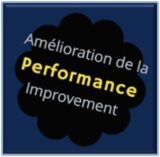What's a competency based approach?
“Many have heard the term competency based approach but in reality, not so many know exactly what it is”.
In short: A Competency Based Approach is a precise training strategy ensuring that each employee masters the necessary competences and the qualifications in order to perform any task under his responsability and that the supervisors have a real time access to their employees’ competency profiles.
DO NOT confuse competence and performance.
- Performance comes with time and practice, more or less time for different individuals.
- When evaluating a competence by observation, we do not evaluate the performance of an employee but his or her ability to perform a certain task according to certain criteria.
So what's a competence?
A competence is the application or the execution of a particular knowledge, skills and behavior combination in order to perform an activity within a specified context.
A competence is the global expected behavior from an employee.
- This behavior has to be observable and measurable, we do this using an observation grid.
- So in order to this, what you observe has to be an action starting with an Observable and Measurable Action Verb.
- This verb has to be in the infinitive form, followed by a direct object, a context and a performance condition. Refer to Bloom’s Taxonomy for a list of action verbs!
- A competence is also the base for your competence profiles, read below for more infomation.
Note: Do not confuse a competence with learning objectives as many do! They are two different things.
Further more, I’ve seen this over and over, vendors without competence knowledge or experience sending their course curriculum or breakdown and mentioning things like: We will cover or we will talk about this and that, or our competent trainer will demonstrate how to do this or that… If a learning objective or a competence is not written from the learner’s perspective, it is not training, it is an information session.
The verbs: To Understand, To Know and To Appreciate CANNOT be used in a Competency Based Approach!

If you lack any of the elements in the above illustration within a specified context, you cannot be deamed competent to fully perform a task.
What's a behavior (attitude)?
Behavior or Attitude is a Know-How to Behave, it’s a state of mind (sensation, perception, emotions, ideas, etc.), it’s an internal disposition that incites a way of doing or a way of acting favorably or not.
Behavior, has mentioned above, is also a state of mind.
- An employee may have, normally, a good behavior or attitude, but for one reason or another, may not be in the right state of mind temporarily, therefore rending the employee unfit for work (non competent momentarily).
What's knowledge?
Knowledge gives a meaning, a value to a competence, it can be related to facts, information, principles, procedures or rules.
- Knowledge can be acquired during training, by observations, by reading, by experience and other ways…
- However, keep in mind that knowledge by itself DOES NOT generate a competence. Specific skills are necessary.
What are skills?
Skills are the Know-Hows and refer to practice, the application of knowledge. It is often mistaken with competence.
- It is an observable behavior.
- A skill cannot be completed correctly without knowledge.
- Nevertheless, an employee could very well master many skills and at the same time, lacking the necessary competence for the task.
Example (skills vs knowledge):
- A person who owns a cell phone or a land phone is able to, in theory, dial any number. However not many, off their head, can locate the numbers (keys) without looking at it.
- I can show anyone in less than 5 minutes how to move a pay-loader, lift the bucket and empty it… doesn’t mean they know how to operate a pay-loader, even if they can move it and lift the bucket, right?
Competency based approach is the most efficient cost effective learning and development model
As I’m demonstrating with examples below, you will see that it is also a cost effective approach that will help your organization save thousands of training hours by performing Competency Assessements while the employee is on the job, instead of sending them back to training, when applicable.
A competency based approach also improves the employee engagement by developing proximity leadership and internal communication by:
- Developing the supervisors and their understanding of the tasks.
- Ensuring the sustainability of training and competency processes.
- Targeting the correct training in the most effective way including Work Practices, SOPs, SWPs and Procedures.
- Covering the HSE and Quality by targeting the right content.
- Preventing employees from performing a task that they are not fully competent to perform and most of the time limiting job related injuries, breakdowns and operational costs.
- Stimulating the notion of integration.
- Maximizing the time spent in training.
- Reducing training time.
- Eliminating ALL “nice-to-know” information, and
- Training JUST in time, JUST enough and JUST for HIM or HER.
Recommended training & competence management platform - Talentlms
How to write a competence
There are 3 elements composing a competence
The competence
- The general Competence statement.
The Competence Elements
- They are the precision of the Competence or the activities that the person must master in order to perform the competence.
The Knowledge and skills
- They are the precision of the Competence Elements or what the person must master in order to perform the competence elements.
Each Competence must include at least 2 Competence Elements (the precision of the competence) and each Competence Element must have at least 2 Knowledge and Skills (the precision of the competence elements).
Example of a competence
Competence
competence elements
Knowledge and Skills
Communicate by email using Outlook on a desktop or Laptop
- Access the messaging system
- Open Outlook
- Consult a received message
- Access an attachment
- Manage an address book
- Create a contact
- Create/update a mailing list
- Manage the messages
- Place a message in a folder
- Create a new folder
- Remove an attachment
- Trace a classified message
- Sort a list of documents
- Delete a message
- Delete a folder
- Etc.
- Etc.
- Etc.
- Etc.
The above and simple example shows you how I create competences. The same principles apply for any tailor-made competences and it is create along with SMEs. One thing is extremely important when creating competences, you never take for granted that your employees know or are able to do something.
Competences are created for new and experienced employees and are the foundation of your competency based approach system. For best results in your competence development, a systematic approach must be implemented.
The action verbs identify what you want to observe from your employees, it is the end result!
For example: If you noticed, I wrote “Consult a received message” and NOT “Open a message“? The reason is that it is the end result you want to observe from your employee. And if he or she is able to Consult a message, they must Know-How to Open it in order to Consult it.
Competence profiles
In short, a Competence Profile is the regrouping of all the competences required for a position and includes soft competences, HSEQ competences and all required technical competences.
- Starting with the job description, we identify the different responsabilities for the position.
- From there, we select or create (if not existant) all the competences necessary for this particular position.
- We then create a competence profile for each position within the organization.
- Note that a competence can be in many profiles, but that there is only ONE profile per postition. This being said, an employee can have many competence profiles and many other competences.
Saving money using a competency based approach
The example below demonstrates how you can save thousands of hours of training and thousands of dollars by using the competency based approach which I’ve personally developped and applied over the years.
The savings illustrated are only for the hourly rates ($45/hour) of the employees, if you add the consulting fees and training costs, you can extrapolate how much my system can save you when applied correctly.
This partial real example was taken from a plant of 1,500 employees with annual mendatory competence recals for HSE training and mobile equipment.
Please use the form below to contact me and see how I can help you set up the same competency system in your organization.


